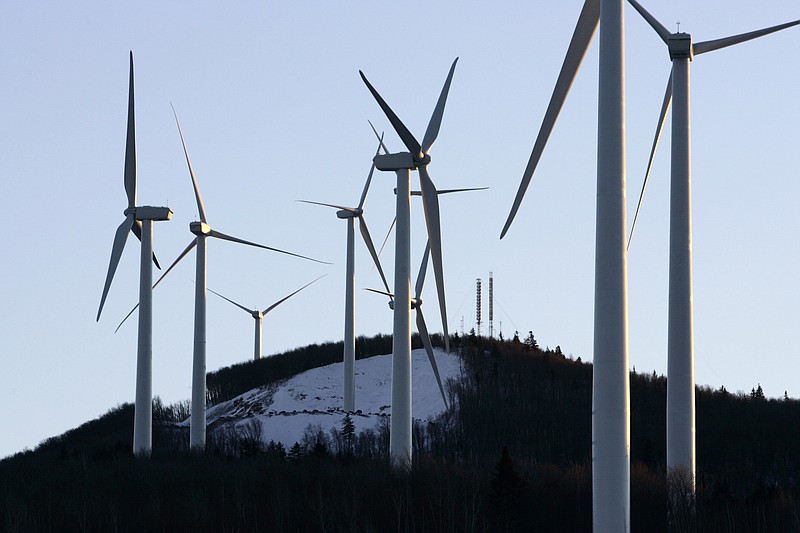If you liked what Obamacare did to your health insurance costs, you'll love what the president's new energy rules will do for your electricity costs.
A year after unveiling a plan that would put in place greenhouse gas limits on existing power plants, President Barack Obama announced his administration's go-ahead with the idea Monday.
It can be expected to, at a minimum, kill manufacturing and energy jobs when power plants close and raise electric rates as much as 7 percent.
Read more
Obama calls for carbon cuts by U.S. power plants
The Clean Power Plan may raise electricity prices in the short run, Environmental Protection Agency Gina McCarthy admitted in June, but she said ultimately they'd drop because of the changes. Officially, American families would save a whopping $85 a year in 2030, the administration boasted Monday.
Remember how your health care costs dropped because of the Affordable Health Care Act? We don't, either.
McCarthy also denied the plan would hurt the economy or cost jobs. But if fossil fuel plants close or have to cut production because of the limits on states, jobs and the economy naturally would be affected. That was just outright dissembling on McCarthy's part.
The electricity rate rises will hit the poor - the same portion of the population that has suffered the most under Obama's economic plan during the last six-plus years - the hardest, too.
But never mind, said McCarthy. The public benefit often outweighs any costs that might have to be paid.
If those consequences weren't bad enough, a University of Minnesota associate professor of bioproducts and biosystems engineering told a United States House subcommittee last week that the administration's continuing push of corn grain ethanol use in the production of gasolines (though not in their burning) "is responsible for reduced air quality over much of the U.S., which leads to increased mortality."
The final Clean Power Plan released Monday imposes stricter carbon dioxide limits on states than were announced a year ago. Instead of states being forced to cut their limits 30 percent, compared to 2005 levels, by 2030, they'll have to pare them back by 32 percent.
But, again as with Obamacare, the devil may be in the details that aren't revealed initially.
"In many cases," Dan Kish, senior vice president for policy at the Institute of Energy Research, told The Washington Times, "they won't find out until they're ramped up. The only law that ever seems to constantly get passed in Washington is the law of unintended consequences. It isn't until all of these things go into place that you can watch what's going to happen. You can't put layer on layer on layer. Eventually, the camel's back breaks."
One of those rules involving the ozone standard is so onerous, Jay Timmons, the president and chief executive officer of the National Manufacturers Association, said in a statement, that even places with no industrial activity for miles around can be considered noncompliant.
"This regulation and the president's climate regulatory action plan are not the answer," a statement from the National Association of Manufacturers said. We will keep all options on the table, including litigation, to protect manufacturers' ability to compete in the global marketplace."
Indeed, lawsuits are expected to be filed immediately over the new rules, which EPA has admitted may drop coal's share of U.S. power generation by a quarter if the plan is fully implemented. Coal, after all, is the industry candidate Obama vowed to kill in 2007. Meanwhile, some energy-related organizations are calling for delays, and several state governors have talked of not complying.
The final draft of the new rules pushes back from 2020 to 2022 the year in which individual states will have to begin cutting their admissions toward a federal government-imposed goal, but that is not likely to make the changes any more popular.
However, the rules are a gift to Republican presidential candidates, who as a president would be able to dismantle, slow or continue Obama's policies after Jan. 20, 2017, or charge that another Democrat would continue the president's plan or conceive of one even more devastating to the economy.
The country's energy policy always should be to seek cleaner and more efficient ways of producing energy, including with fossil fuels, but not to punish and penalize those already in use. As greener energies become less expensive to use without government subsidies - and administration officials could not boast of solar or wind being so in the fact sheet they released Monday - they naturally should be included in a total energy plan.
But until they are, they should be used only where they are cost-efficient, and this plan should die the death it deserves either in a court or at the hands of the next president.
